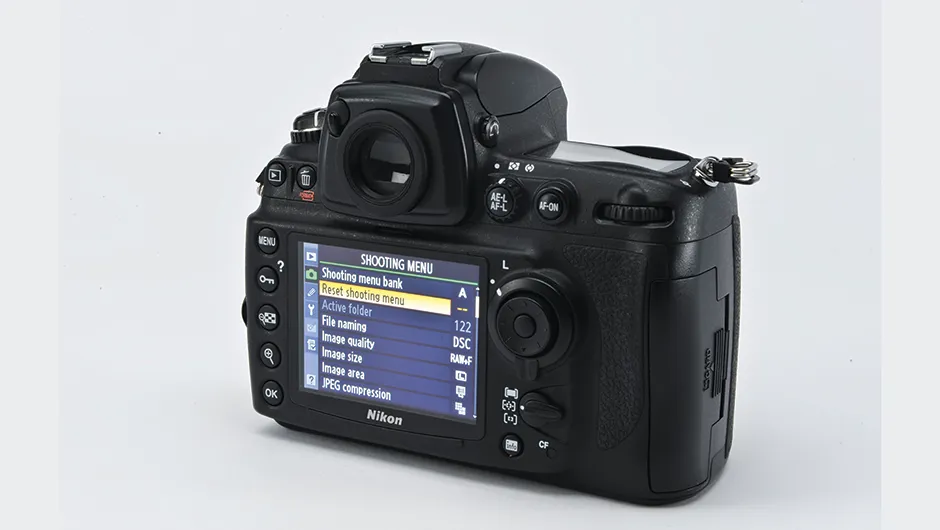The Nikon D700, on sale since July 2008, is a follow-on to the company’s first full-frame model – the D3.Of the three models on test, the D700 has the lowest number of effective pixels in its CMOS sensor, at 12.1 million.
Compared to the Sony A850’s 24.6 million and the Canon 5D Mark II’s 21.1 million, it’s a significant difference.
However, for astrophotography this isn’t always a bad thing. High pixel densities can lead to increased noise and one thing we noticed about the D700 was that its images were amazingly noise-free.
Although there are quite a few buttons scattered around the D700’s body, it doesn’t take too long to get used to the control layout.
Like the Canon 5D Mark II, the D700 also has Live View focusing, which was very easy and accurate to use.
From an astrophotography viewpoint, there’s a lot to like about the D700.
For example, it offers an excellent default ISO range from 200-6400 and the ability to extend this further to 100-26600.
High ISO settings increase the sensitivity, enabling you to catch more detail – perfect for deep-sky images.
However, upper values can introduce so much noise that they pepper images with star-like artefacts.
However, the D700 is pretty good in the default range and gives adequate results even at 6400.
We did some test wide-field shots of the Taurus-Orion region with an f/2.8, 28mm lens at ISO 1600 and 6400.
The difference between our 40s, ISO 1600 shot and 10s, ISO 6400 shot was mainly in the smoothness of the background sky – it started to look a bit patchy at higher ISOs. Both were respectable results though.
During our California Nebula test sequence, we were very impressed at how well the D700 recorded the faint wisps of deep-red nebulosity even with relatively short exposures at a low ISO.
This camera is on our list of the best cameras for astrophotography.

Our 15-minute, ISO 1600 dark frame also came out fairly clean.
However, extreme stretching showed a degree of non-uniformity in the frame, especially noticeable compared to the flatness of the Canon 5D Mark II’s dark-frame.
The D700 has a number of interesting functions that are excellent for astrophotography, such as a vignette control to reduce the ‘shading’ effect at the edge of frame, which some optics can introduce.
We were also excited by its intervalometer, which allows you to program the camera to take a sequence of exposures automatically.
This would be excellent for time-lapse sequences or for subjects that need multiple, sequential exposures such as meteor showers.
There’s also a virtual horizon function, which appears on the rear screen to show the horizontal tilt of the camera.
This would be useful for dusk or dawn wide-field shots of the Moon or planets against a dim horizon.
The camera's low noise and general image quality were excellent and many of its functions are powerful, easy to use and useful for astrophotography.
- Price£2247.99
- Weight1075g
- SupplierNikon UK Ltd
- Telephone0330 123 0932
- Websitewww.europe-nikon.com/en_GB
